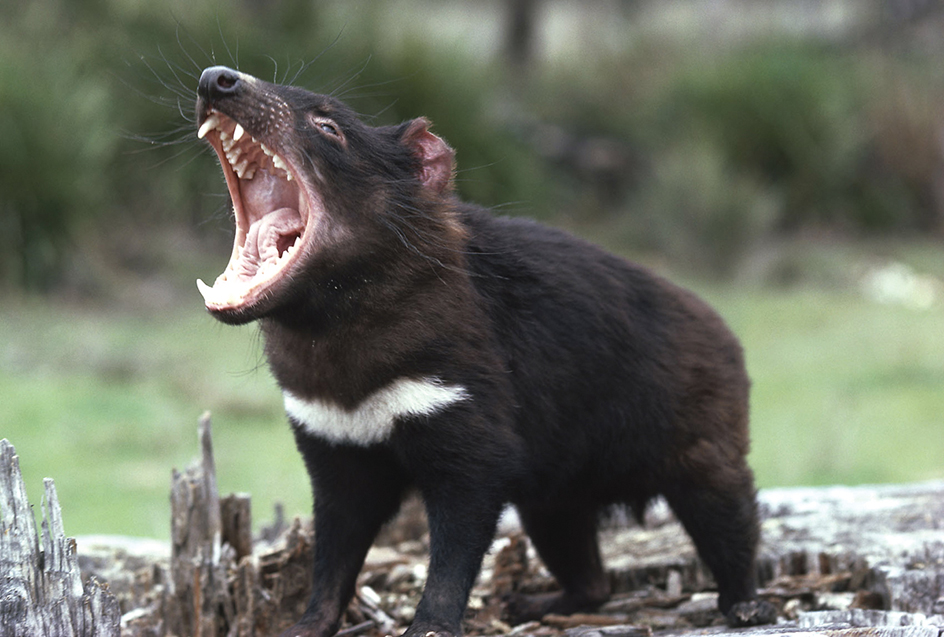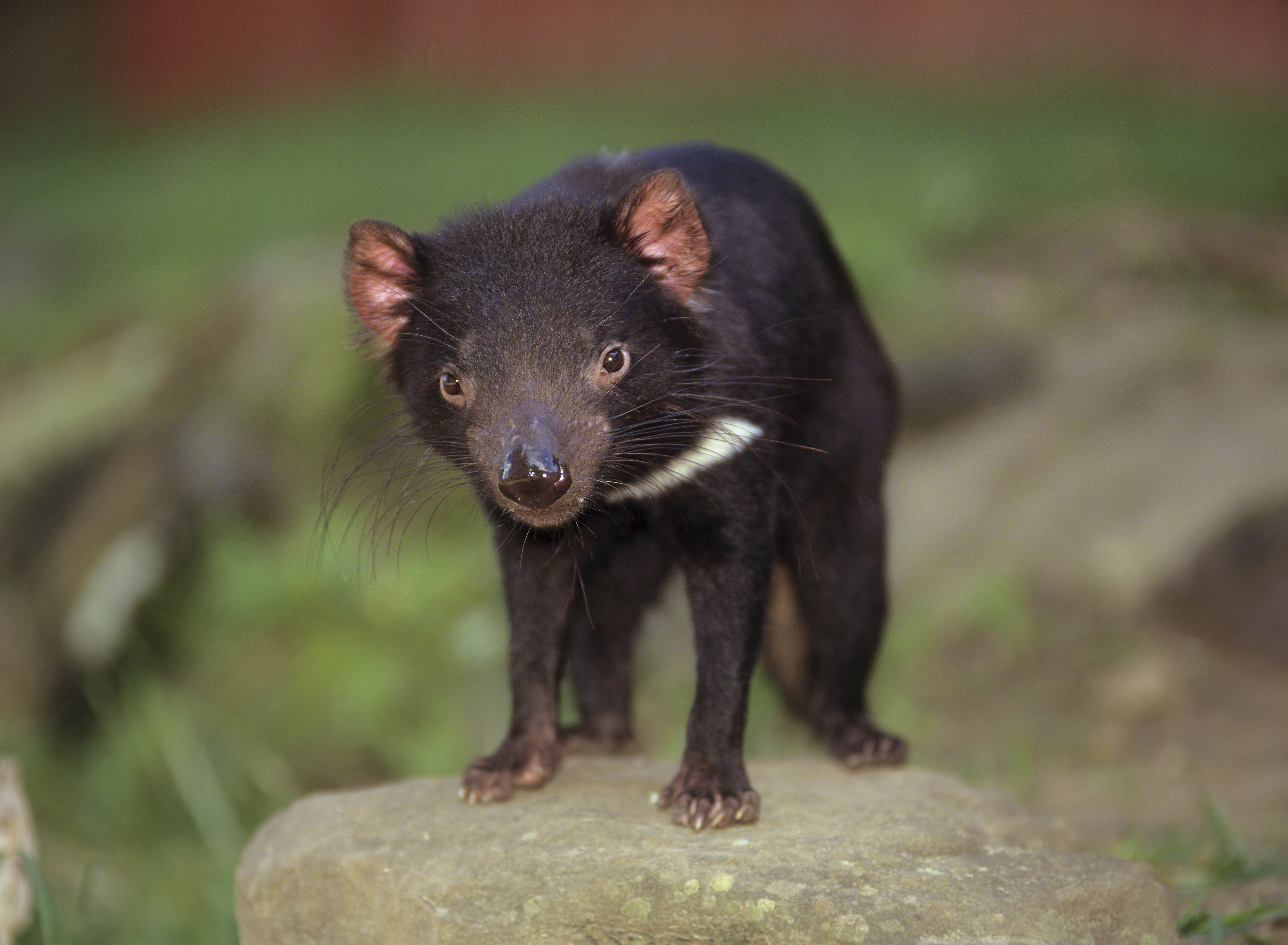Tasmanian << taz MAY nee uhn >> devil is a meat-eating animal that lives on the Australian island of Tasmania. It is a marsupial, a kind of mammal that gives birth to tiny, poorly developed offspring. Tasmanian devils get their name from their fierce displays, which include screeches and snarls and opening their mouths wide to show their sharp teeth. They feed mostly on the remains of dead animals, but they also kill and eat reptiles, birds, mammals, and other animals.

Adult Tasmanian devils measure about 3 feet (0.9 meter) long, including a tail of up to 1 foot (30 centimeters). They have mostly black fur, with some white markings on the chest and rump. They also have short, muscular legs and a large head with big ears.
Loading the player...Tasmanian devil
Tasmanian devils sleep during the day in dens, caves, or other hidden places. They become active at night. Females raise up to four offspring each year. They carry their young in a pouch on the abdomen. The young remain in the pouch for about 15 weeks, feeding on the mother’s milk.

Tasmanian devils once lived on the Australian mainland. Scientists estimate that this population died out 3,500 to 3,000 years ago, but they do not know exactly why. Some biologists think dingoes hunted devils to extinction on the mainland.
Tasmanian farmers long trapped and poisoned Tasmanian devils to keep them away from livestock. As a result, the devils became rare. Australia outlawed the killing of Tasmanian devils in 1941.
Since the 1990’s, a deadly cancer called devil facial tumor disease has killed tens of thousands of Tasmanian devils, devastating the population. This cancer is unusual because it is contagious. It spreads when devils bite each other. Scientists are working to understand how the disease might be controlled. Zoos and conservation facilities breed Tasmanian devils to maintain a separate, disease-free population.
Tasmanian devils were declared endangered in 2008. The chief reason was the spread of devil facial tumor disease. Many Tasmanian devils are also killed by dingoes, domestic dogs, and automobiles.
In the early 2020’s, conservationists introduced the Tasmanian devil to a wildlife sanctuary on the Australian mainland. Their offspring were the first devils to be born on the mainland in thousands of years. Conservationists hope that if Tasmanian devils are released into wild habitats in mainland Australia, they will help maintain the balance of nature there.

